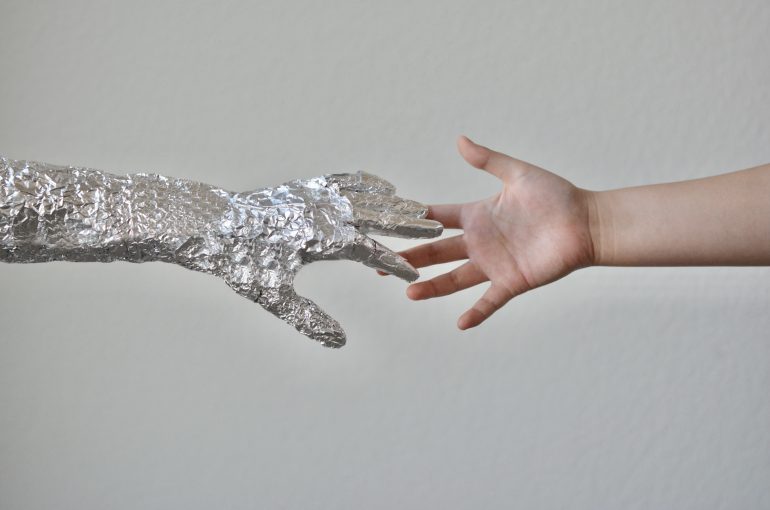Many kids who watched Star Wars became fascinated by Luke Skywalker’s robot companions, R2-D2 and C-3PO. They wondered if life would be more exciting in the company of robots and thought about the unique ways that robots could help our lives, from cleaning our homes to exploring deep space. As it turns out, this wasn’t such a far-fetched dream–recent research shows that robots have the potential to help us socialize.
Studies have shown that children can form social connections with robots surprisingly well due to our tendency to personify non-human animals and objects. According to the study “Reading Socially: Transforming the In-Home Reading Experience with a Learning-Companion Robot,” this phenomenon is more likely to occur if the object, such as a robot, has human-like features, such as eyes and arms. These researchers investigated whether reading aloud to a robot improved children’s reading skills; by the end of the study, the participating children felt that the robot improved their comprehension by listening to them read and talking with them about their books. An unexpected finding was that joint reading with the robot helped many children view it as a companion with emotions and a personality. Considering that this sample of neurotypical children felt connected with a robot, the natural next question is: can robots also benefit neurodiverse individuals who experience and interact with the world in different ways? Based on several studies, it seems that social robots can play and read with children to support social and cognitive growth, which may help some children diagnosed with Autism Spectrum Disorder (ASD) develop their social skills.
ASD is a broad and complex range of neurodevelopmental conditions that affect human experiences and interactions. Autistic individuals have different strengths and methods of interacting with their surroundings. They can have challenges communicating with others and understanding emotions. For example, some people have trouble understanding body language, and therefore struggle to identify the appropriate times to contribute to a conversation. Social robots can be programmed to support autistic individuals on certain social tasks, such as maintaining eye contact and understanding other perspectives. The goal of using social robots as a tool in ASD therapy is to introduce social cues and emotions in a more digestible way. These social robots and therapy are tools that can help prepare people with ASD to navigate social interactions and conversations more easily.
Furthermore, autistic individuals can feel sensory overstimulation as their senses try to process too much information when interacting with others, which can cause extreme discomfort. Research shows that some people with ASD are more comfortable working with social robots because they provide predictable and simple interactions that are easier to understand, leading to less sensory overstimulation. In the study “Improving Social Skills in Children with ASD Using a Long-Term, In-Home Social Robot,” children with ASD played several skill games with social robots. In one game called “The Story Game,” the children read a story and worked on social and emotional skills by interpreting the feelings of characters. Other games focused on understanding other people’s perspectives and following instructions closely. After one month, caregivers reported that their children made and maintained more eye contact with others than before. The children also tried to start conversations and respond to people more often. These findings show that interacting with social robots in a familiar environment, such as their homes, can reduce overstimulation for autistic children, improving social and emotional skills.
Despite research showing possible benefits of using social robots, it’s important to remember that these robots cannot replace human therapists, who are able to empathize and better understand the diverse needs of children with ASD. Instead, social robots offer simpler interactions that are easier to comprehend and respond to; they cannot convey many complex emotions and feelings that are present in conversations with a human therapist. However, social robots trained with certain games and activities can still provide some valuable at-home intervention for children, especially if they live too far away to visit their therapists regularly. Robots should not replace therapists, but they should instead become another tool therapists can use to help better the lives of people with ASD.
According to the paper “Exploring the Biology of Socialization,” experiences can psychologically affect the organization of the brain. The neurological organization in ASD varies from that of a neurotypical individual; however, working with social robots may help people with ASD struggle less with personal interactions by rewiring the brain. These social robots can create positive memories and experiences to associate with social interactions, helping autistic individuals feel less overwhelmed during future interactions.


